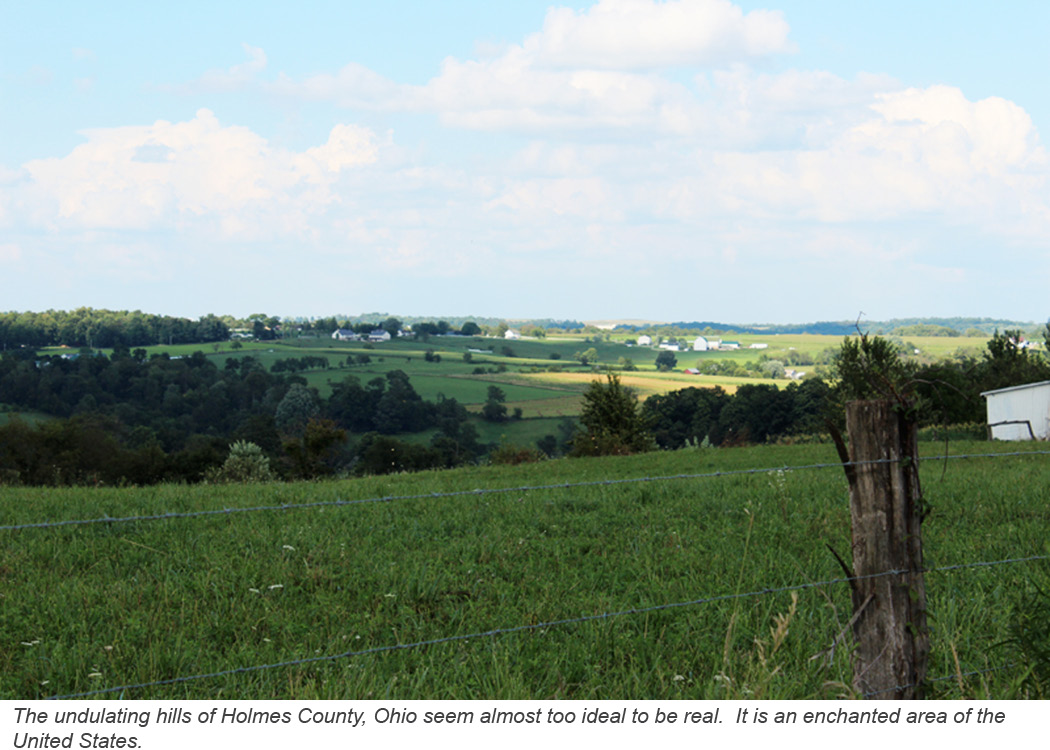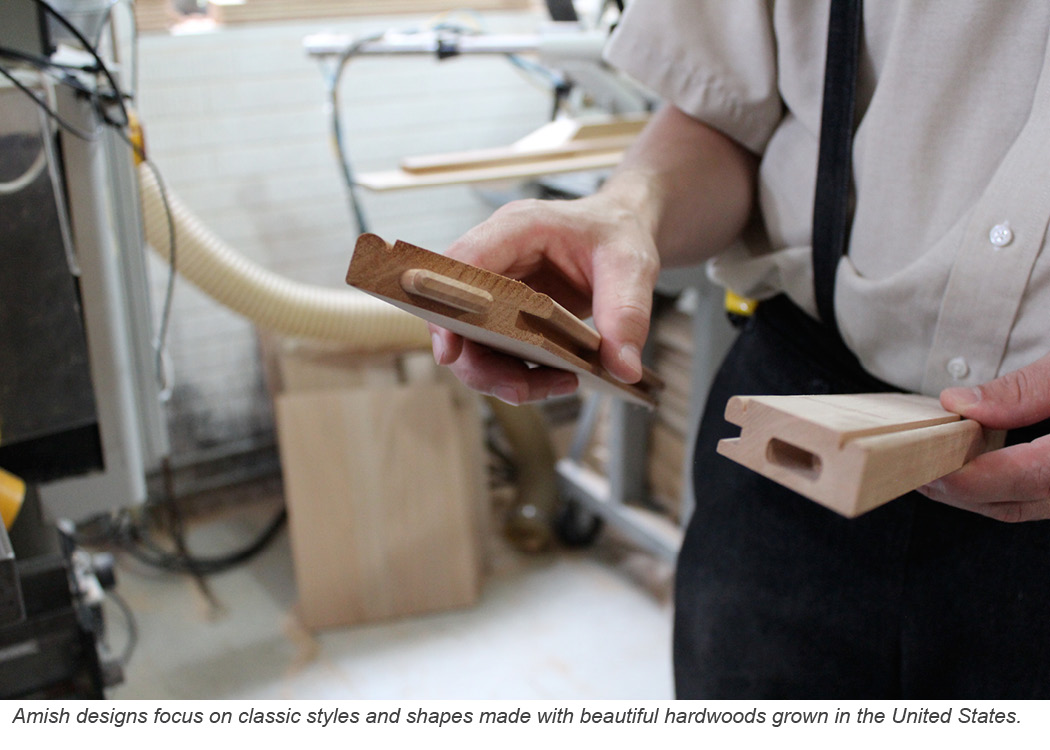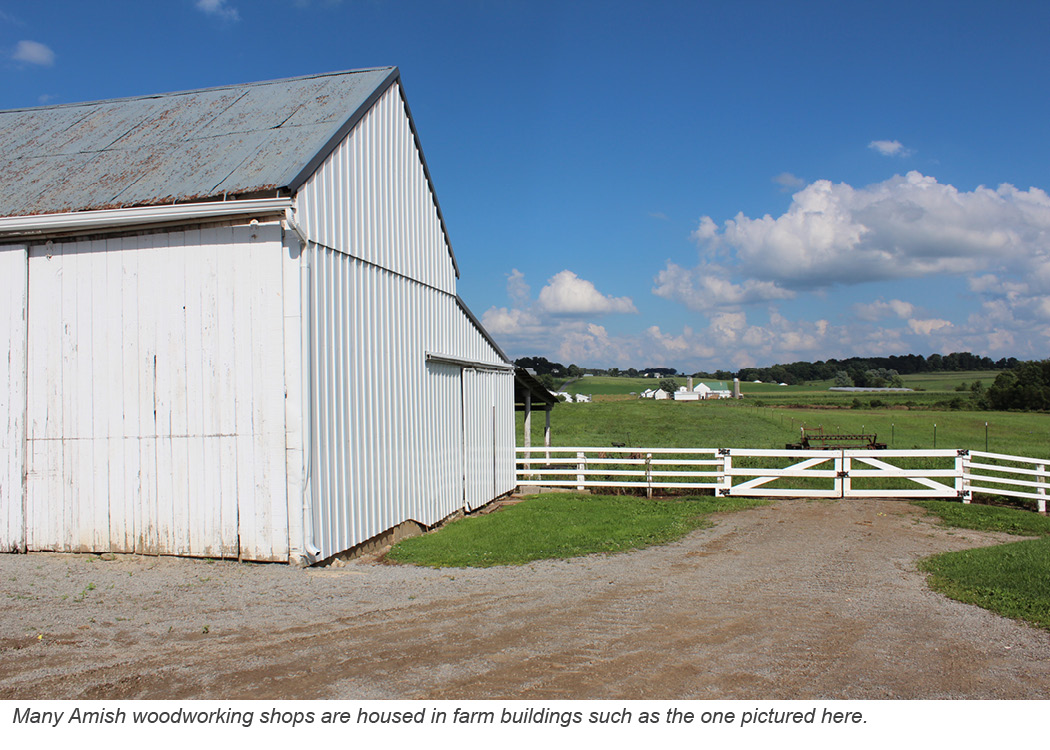Handcrafted-One Piece at a Time
Over the years we have developed very close relationships with a number of Amish craftsmen that make pieces for our customers, all one at a time. The skills necessary to “work” their select hardwoods have been handed down from generation to generation and each piece made today is made in much the same manner as it would have been made two hundred years ago. At Chestnut Hall, we feel fortunate to have become accustomed to this level of craftsmanship and precision and to have the working relationships we have with these extraordinary craftsmen.
 Lancaster and Holmes Counties
Lancaster and Holmes Counties
Two of the oldest Amish “settlements” in the United States are located in Lancaster County Pennsylvania, circa 1730 and Holmes County Ohio, circa 1800. Much of what is on our showroom floor was handcrafted in these communities. We have spent a great deal of time with our Amish friends in these wonderful places, not only reviewing their manufacturing processes and materials but also getting to know and understand their values and faith. This understanding has made us realize that the origin of the pieces they create is not the physical location where they are made, but rather it is in the heart and soul of each individual craftsman. To see their tasks so rigidly performed with honor as their guide in everything they do is very humbling.

Materials and Techniques
You can see the “calling” of craftsmanship in every piece the Amish make. The hardwoods selected for each piece are perfect and the joinery and finishes are superb. It would not be honorable to “cut corners” in their manufacture and as a result, no corners are cut. Modern manufacturing techniques, evident in much of the furniture produced in the world today, have provided us the opportunity to “marvel at the triumph of appearance over substance.” These “modern” techniques have no place in the Amish woodworking communities. You will not find any resin components that “look like wood” or obscure, inexpensive wood species being used that resemble our more coveted American species. The structural integrity and intrinsic value of the materials used are as they appear to be. Only the finest cherry, walnut, maple and oak, all domestically grown and kilned dried, are used. That is where the Amish craftsmen start. To these precious timbers they then apply their inherited skills with the love of a creator from their heart and soul. The results are as close to perfect as is humanly possible.

Don’t Look for Large Factories
While just about every Amish male has a learned skill, many become some of the best woodworkers in the world. But with all the furniture being made in their communities, you will not find any facilities that one would recognize as a factory. Each craftsman does what he or his family does best. Just like their communities, the manufacture of furniture is a collective effort. One family will make the drawers, for instance, while another family might make the tops and sides with yet another family assembling the finished product. Everyone does what they do best and as a result, the individual pieces are outstanding. There are no factories to speak of, just woodworking shops in buildings that are tantamount to converted barns.
On More Thing to Think About
There is much we like and much to like about the Amish furniture making process. Even the delivery process is eco-friendly in that the Amish do not box or crate any of their furniture. There is no Styrofoam or packaging materials used of any kind except re-useable furniture blankets. Each piece delivered to our store is brought inside where the blankets are removed for inspection. They are then folded for reuse and put back on the truck. Nothing goes in the landfill. It is a beautiful process from start to finish.